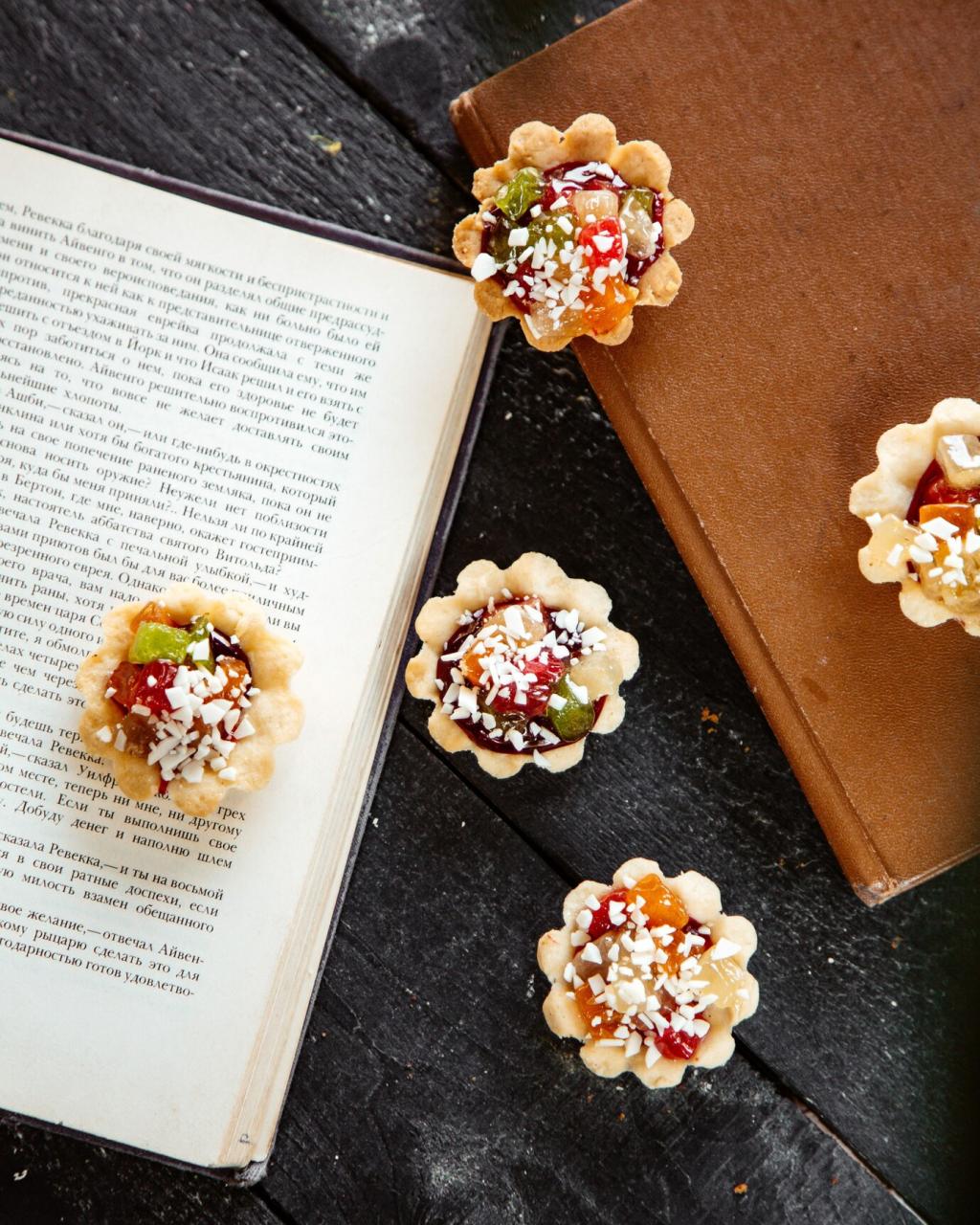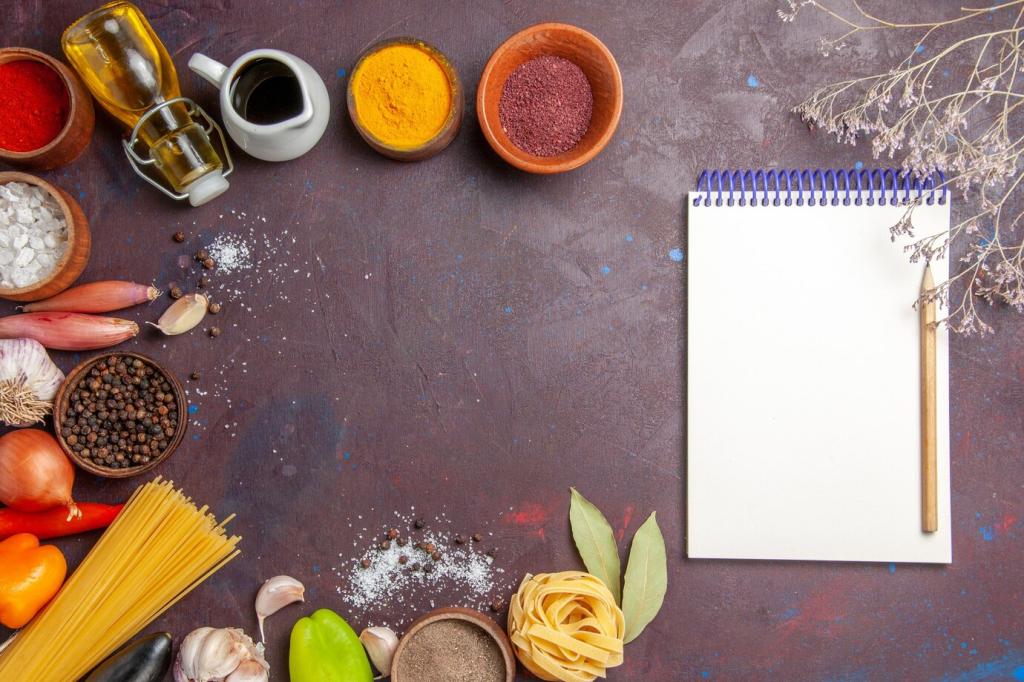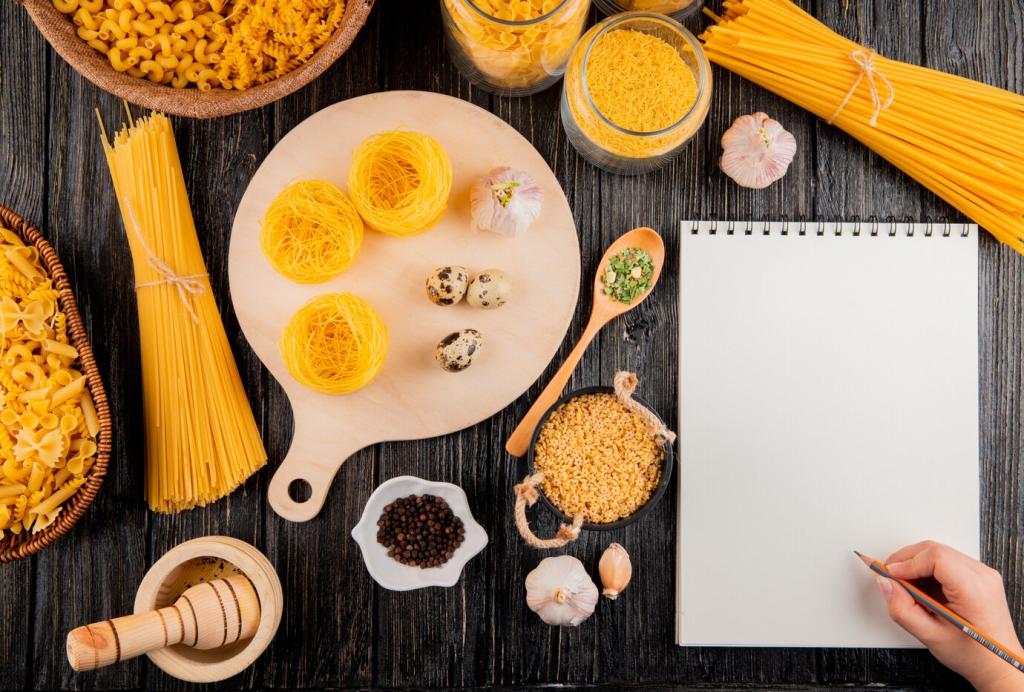Exploring the Art of Cookbook Authorship
Chosen theme: Exploring the Art of Cookbook Authorship. Step into a kitchen of words where recipes become stories, testing builds trust, and voice tastes like memory. Subscribe and join our table—your questions, drafts, and culinary dreams are welcome here.

Tuning Your Palate for Prose
Think of voice like seasoning: bright with citrus, warm with spice, or calm like steamed rice. Read your sentences aloud, trim excess salt, and let verbs sear. Share a paragraph you’ve ‘reduced’ for clarity.

Writing for a Real Reader
Picture a single cook: their budget, time, tools, allergies, and cravings. Write to their Tuesday night, not your fantasy kitchen. Tell us who you’re cooking for, and we’ll suggest voice cues that resonate.



Testing, Precision, and Trust
Standardize your kitchen scale, control pan sizes, and test on different stoves. Log ambient temperature, resting times, and subjective texture notes. Invite two testers with different skill levels; compare their outcomes and questions.
Testing, Precision, and Trust
Burnt caramel, split mayo, and flat pavlovas teach quietly and thoroughly. Capture each failure, hypothesize causes, and retest with one change. Share a recent misstep, and the community will help diagnose and encourage.
Architecting Chapters with Purpose
Build chapters around needs, not just courses: weeknights, batch cooking, celebrations, foundations. Ensure each section escalates skills and confidence. Share your tentative table of contents for feedback on pacing and balance.
A Photography and Styling Brief that Serves
Create a shot list by recipe difficulty; prioritize process photos where errors occur. Favor natural light, honest portions, and practical props. Ask readers which process moments they most want pictured in your next shoot.
Accessible, Cookable Layout
Use generous type, clear section breaks, and callouts for timing and tips. Offer conversions tables and pantry primers. If you’ve tested an accessible PDF template, share a spread and ask for usability notes.

Respect, Attribution, and Cultural Context
01
Trace a recipe’s journey through cookbooks, blogs, and oral histories. Name influences in headnotes and bibliographies. Invite readers to share family variations so you can include respectful nods to community knowledge.
02
Explain why tomatoes taste different in January, and offer frozen or canned alternatives. Name sustainable choices without shaming. Ask your audience which seasonal swaps they rely on, and compile their wisdom for updates.
03
Avoid flattening diverse cuisines into trends. Include correct terminology, pronunciations, and context for celebratory dishes. Share a sentence you revised to be more respectful, and tell us what changed your approach.
From Proposal to Publication
Craft a sharp overview, market positioning, sample recipes, and a chapter list that proves scope and feasibility. Ask for a peer review of your hook paragraph; strong openings open doors with agents and editors.

